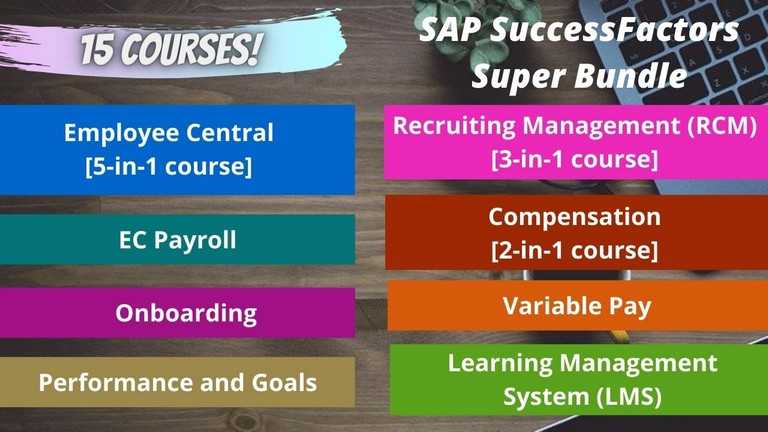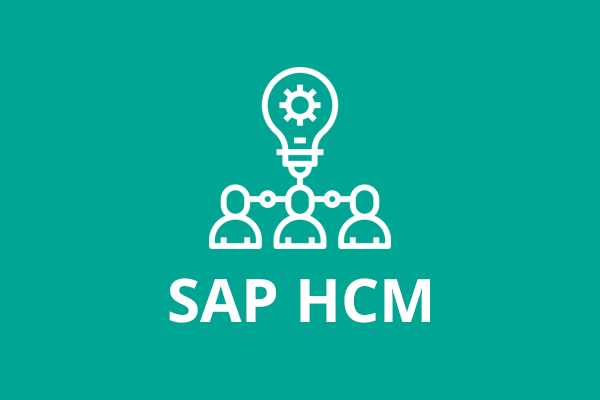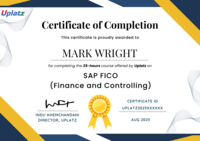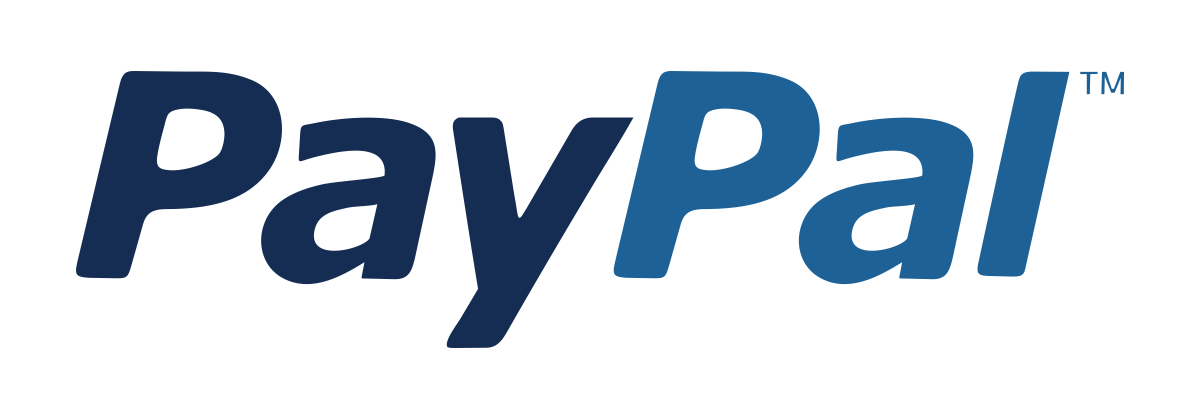SAP SuccessFactors Succession & Development
Learn to manage SAP SF Succession & Development module with focus on engaging & retaining employees to support the organization's strategy & success. Price Match Guarantee
Full Lifetime Access
Access on any Device
Technical Support
Secure Checkout
Course Completion Certificate
Price Match Guarantee
Full Lifetime Access
Access on any Device
Technical Support
Secure Checkout
Course Completion Certificate
 81% Started a new career
BUY THIS COURSE (
81% Started a new career
BUY THIS COURSE (GBP 12 GBP 29 )-
 83% Got a pay increase and promotion
83% Got a pay increase and promotion
Students also bought -
-

- Bundle Super - SAP SuccessFactors
- 250 Hours
- GBP 22
- 846 Learners
-

- SAP SuccessFactors Employee Central (end-to-end)
- 15 Hours
- GBP 12
- 1850 Learners
-

- SAP HCM (Human Capital Management)
- 20 Hours
- GBP 12
- 2492 Learners

SAP SuccessFactors Succession & Development module assists HR professionals in identifying and developing the talent required to strengthen organisational strength and meet today's business objectives, as well as offering insight and planning for future expansion. You must engage in a variety of activities linked to success and growth that aid in the development of talent required to boost an organization's strength. It enables organisations to maintain a steady supply of internal talent in order to fulfil essential objectives, individuals to reach their full potential, and development and target plans to be met more quickly.
It is a comprehensive suite of human capital management (HCM) software solutions offered by SAP. It is designed to help organizations effectively manage their talent pipelines, succession planning, and employee development initiatives.
Key Features of SAP SuccessFactors Succession & Development module are:
1) Succession Planning: SuccessFactors Succession & Development provides tools for identifying and developing high-potential employees within an organization. It allows HR teams to create succession plans, identify key roles, and assess potential successors based on performance, skills, and career aspirations.
2) Talent Pool Management: The software enables organizations to build and manage talent pools by capturing employee skills, experience, and career interests. This helps in creating a robust talent pipeline for critical roles and future leadership positions.
3) Development Planning: SuccessFactors offers tools for creating personalized development plans for employees to help them enhance their skills, address competency gaps, and achieve their career goals. It supports various learning and development activities, including training programs, mentoring, coaching, and job rotations.
4) Career Pathing: The platform facilitates career pathing by providing employees with visibility into potential career advancement opportunities within the organization. It helps employees understand the skills and experiences needed to progress in their careers and guides them in planning their career trajectories.
5) Performance Management Integration: SuccessFactors Succession & Development integrates with SAP's performance management solution, allowing organizations to align succession planning and talent development efforts with performance evaluations. This integration ensures that decisions regarding talent development and succession are based on objective performance data.
6) Analytics and Reporting: The software offers advanced analytics and reporting capabilities that provide insights into talent gaps, succession readiness, and the effectiveness of development initiatives. HR teams can leverage these insights to make data-driven decisions and optimize their talent management strategies.
Key Benefits of learning SAP SuccessFactors Succession & Development module include:
1) Enhanced Talent Management Skills, 2) Career Advancement Opportunities, 3) Increased Organizational Efficiency, 4) Strategic Talent Planning, 5) Data-Driven Decision Making, 6) Improved Employee Engagement and Retention, 7) Competitive Advantage
SAP SuccessFactors Succession & Development helps organizations build a strong leadership pipeline, enhance employee engagement, and drive business success through effective talent management practices. Succession management is critical for firms to succeed in today's competitive global market. In reality, companies that effectively develop the next generation of talent as well as engage and keep present employees can gain a significant competitive edge.Those that don't will find themselves without the necessary leaders to guide their future strategy and success. SAP SuccessFactors Succession and Development reduces risk by developing the people required to meet today's company objectives while also offering the insight and planning capabilities required to support future development.
Uplatz provides this SAP SuccessFactors Succession & Development course aimed to help you become an SAP SAP SuccessFactors Consultant and/or an HR Professional.
Course/Topic - SAP SuccessFactors Succession & Development - all lectures
-
Lecture 1 - SAP SuccessFactors Succession & Development
-
Lecture 2 - SAP SuccessFactors Succession & Development
-
Lecture 3 - SAP SuccessFactors Succession & Development
-
Lecture 4 - SAP SuccessFactors Succession & Development
Assess talent risk and identify gaps in the workforce
Identify hidden potential through company-wide talent searches
Instantly nominate internal and external successor prospects for critical roles
Measure the performance of your succession plans and their influence on business results with bespoke reports and dashboards
Use talent pools to expand succession planning deep into your company.
Q1. What is SAP SuccessFactors?
SuccessFactors is a key element that is required for every organization or a project to achieve its mission. They are called success factors because of their explanatory behavior which results in successful performance in the job.
Q2. Define SuccessFactors and why are they called by that name ?
Because they explain behaviours which results to successful performance in the job.
Q3. In What way can Employee Central be Integrated with Successfactors Products?
With the help of HRIS sync by successFactors Products, Employee central can be Integrated Internally.
Q4. What does the Succession Data Model contain?
The Employee Records are contained in the Succession Data Model. The succession data mode configures the fields that will appear in the Employee’s Personal Information (outside of work) Employment Information (inside of work).
Q5. What is configured in the Country -Specific Succession Data Model?
Address formats, country specific fields and international standards are set in the country-spe, succession data model.
Q6. What does the Corporate Data Model define?
Foundation Objects and their relationships are defined in the corporate data Model. Foundation Objects are also called Foundation Tables. They include Organization, Job and Pay.
Q7. What is defined in the Country -Specific Corporate Data Model?
In here foundation objects fields for a separate country are defined.
Q8. How many data models are there in Employee Central?
7
Q9. How do you masked sensible data in a field?
Set the attribute pii=”true”
Q10. How do you set a field so the user can edit it?
Set the attribute visible=”both”
Q11. How do you make a field to be required to be filled?
Set the attribute required=”true”
Q12. What is a DTD?
Document Type Definition of the data model
Q13. Where you create associations?
Corporate Data Model and object definition tool.
Q14. Is it necessary to select the same level for the identified success factors?
Answer. No, it may result in single level.
Q15. What If the employee doesn’t agree with the success factors that their manager has chosen?
The manager uses the job analysis information to determine the Success Factor for the role in conjunction with discussions with the individual. However, it is ultimately the manager’s decision.
Q16. Where you create associations?
Corporate Data Model and object definition tool.
Q17. Why are they called ‘success factors’?
Because they are behaviors which lead to successful performance in the job.
Q18. Are they going to apply to academic staff ss well?
There is a similar framework for Strategic Leaders Framework and one for researchers which have been based on Success Factors. The idea going forward is to have something similar for all staff groups in the university.









